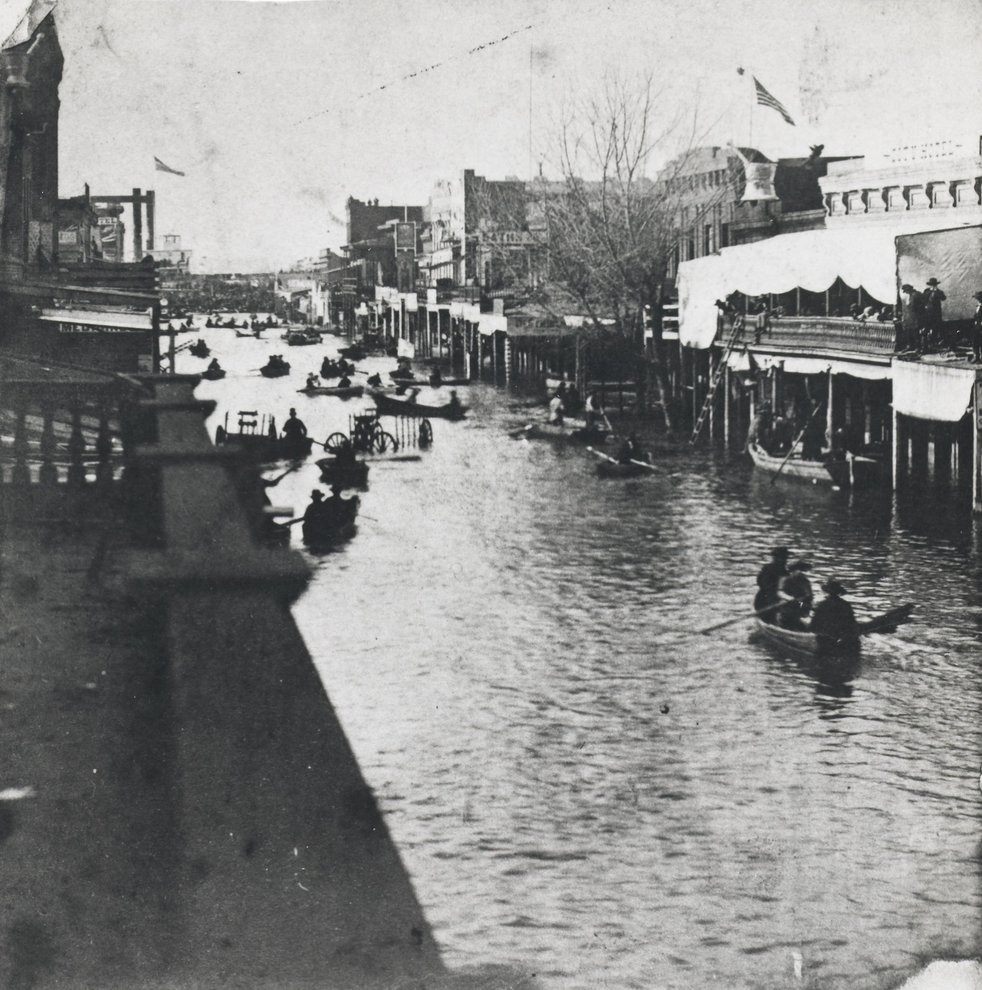Science News
Floods? In California?

When we think of water-related disasters in our great state, we often think drought. And in fact, drought always hovers in the news, whether we’re in the middle of one or it’s looming on the horizon.
But what about the opposite? The US Geological Survey had a conference and issued a press release this month about preparing for severe flooding in our state. Flooding that could cause more damage and be even deadlier than a large earthquake.
What the what? How is this possible?
Atmospheric rivers, my friend, atmospheric rivers.
According to NOAA:
Atmospheric Rivers are narrow corridors of concentrated moisture in the atmosphere and are a key process linking weather and climate. When atmospheric rivers strike land, they produce flooding rains that can disrupt travel, induce mud slides, and cause catastrophic damage to life and property.
The USGS goes on to say that atmospheric rivers are:
a hurricane-like phenomenon that occurs on the west coast.
And the Sacramento Bee defines the phenomenon this way:
a focusing of high-powered winds that drag a fire hose of tropical moisture across the Pacific Ocean, pointed directly at California for days on end.
The big, wet storms we had in northern and southern California in December were due to a series of atmospheric rivers, but apparently only a tame series.
It can get much worse, says USGS,
Beginning on Christmas Eve, 1861, and continuing into early 1862, an extreme series of storms lasting 45 days struck California. The storms caused severe flooding, turning the Sacramento Valley into an inland sea. A storm comparable to that of 1861-1862 could occur again.
“We think this event happens once every 100 or 200 years or so, which puts it in the same category as our big San Andreas earthquakes,” stated Lucy Jones, chief scientist of the USGS Multi-Hazards Demonstration Project, in the recent press release.
To prepare for a storm of this magnitude and greater, USGS has created a model scenario called ARkStorm. The scenario estimates that California’s flood protection system would be overwhelmed and more than $300 billion in damage would result. That could be worse than a large earthquake.
Being prepared is the key.
“The time to begin taking action is now, before a devastating natural hazard event occurs,” said USGS Director, Marcia McNutt. “This scenario demonstrates firsthand how science can be the foundation to help build safer communities. The ARkStorm scenario is a scientifically vetted tool that emergency responders, elected officials and the general public can use to plan for a major catastrophic event to help prevent a hazard from becoming a disaster.”
Image of Sacramento in early 1862 courtesy of the Center for Sacramento History